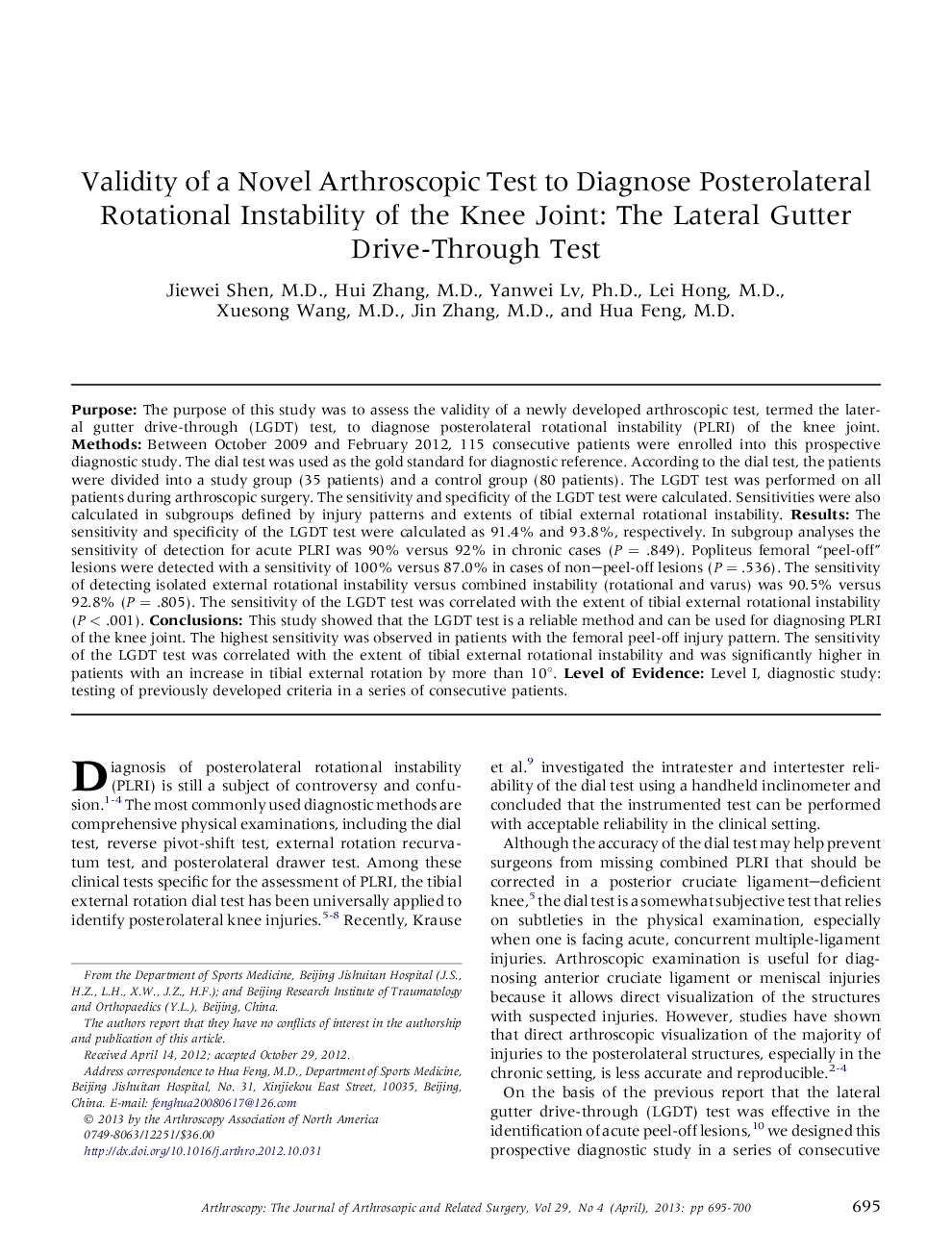| کد مقاله | کد نشریه | سال انتشار | مقاله انگلیسی | نسخه تمام متن |
|---|---|---|---|---|
| 4043822 | 1603513 | 2013 | 6 صفحه PDF | دانلود رایگان |

PurposeThe purpose of this study was to assess the validity of a newly developed arthroscopic test, termed the lateral gutter drive-through (LGDT) test, to diagnose posterolateral rotational instability (PLRI) of the knee joint.MethodsBetween October 2009 and February 2012, 115 consecutive patients were enrolled into this prospective diagnostic study. The dial test was used as the gold standard for diagnostic reference. According to the dial test, the patients were divided into a study group (35 patients) and a control group (80 patients). The LGDT test was performed on all patients during arthroscopic surgery. The sensitivity and specificity of the LGDT test were calculated. Sensitivities were also calculated in subgroups defined by injury patterns and extents of tibial external rotational instability.ResultsThe sensitivity and specificity of the LGDT test were calculated as 91.4% and 93.8%, respectively. In subgroup analyses the sensitivity of detection for acute PLRI was 90% versus 92% in chronic cases (P = .849). Popliteus femoral “peel-off” lesions were detected with a sensitivity of 100% versus 87.0% in cases of non–peel-off lesions (P = .536). The sensitivity of detecting isolated external rotational instability versus combined instability (rotational and varus) was 90.5% versus 92.8% (P = .805). The sensitivity of the LGDT test was correlated with the extent of tibial external rotational instability (P < .001).ConclusionsThis study showed that the LGDT test is a reliable method and can be used for diagnosing PLRI of the knee joint. The highest sensitivity was observed in patients with the femoral peel-off injury pattern. The sensitivity of the LGDT test was correlated with the extent of tibial external rotational instability and was significantly higher in patients with an increase in tibial external rotation by more than 10°.Level of EvidenceLevel I, diagnostic study: testing of previously developed criteria in a series of consecutive patients.
Journal: Arthroscopy: The Journal of Arthroscopic & Related Surgery - Volume 29, Issue 4, April 2013, Pages 695–700